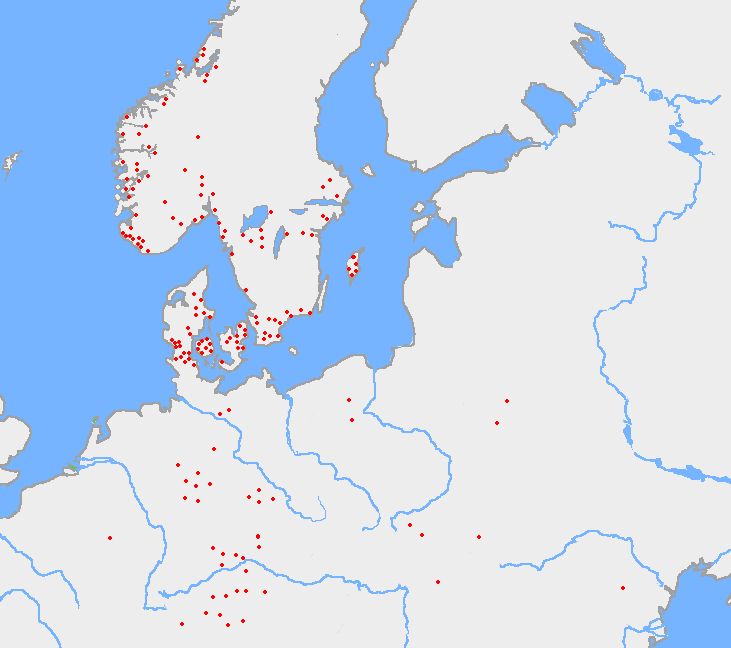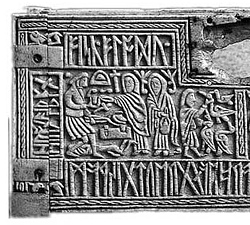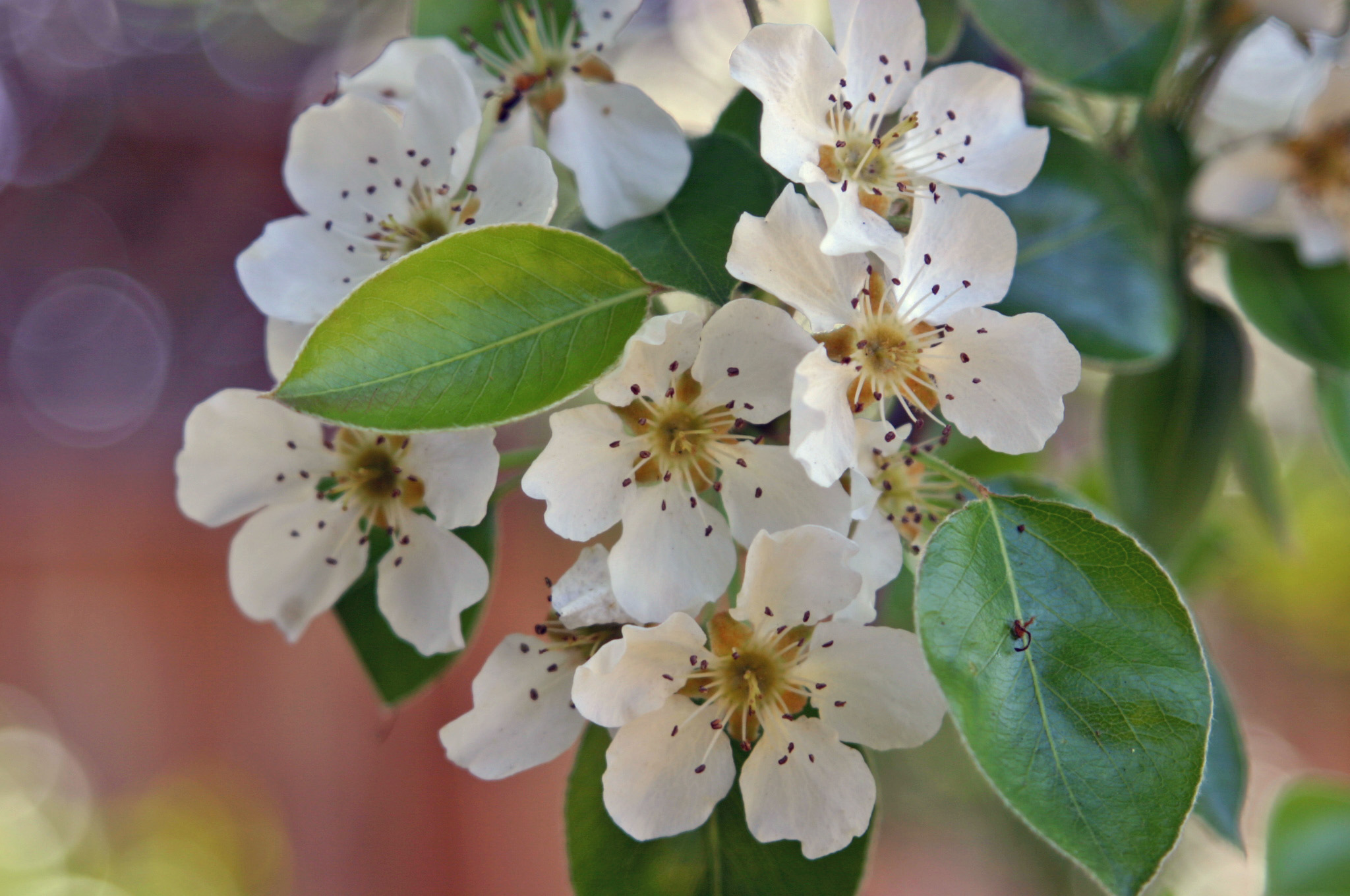|
Ceirt
Ceirt (''Queirt'') ᚊ (Primitive Irish ''cert'') is a letter of the Ogham alphabet, transcribed as Q. It expresses the Primitive Irish labiovelar phoneme. The 14th century '' Auraicept na n-Éces'' glosses the name as ''aball'', meaning "apple tree". Its phonetic value is {{IPA, ʷ}. The ''Bríatharogam'' (kennings) for the letter are: *''Morainn mac Moín'': ''Clithar baiscill'' ‘the shelter of a lunatic’ *''Maic ind Óc'': ''Bríg anduini'' ‘substance of an insignificant person’ *''Con Culainn'': ''Dígu fethail'' ‘dregs of clothing’ McManus (1991:37) compares it to Welsh ''perth'' ‘thorn bush’, Latin ''quercus'' ‘oak’ (PIE *''perkwos''); it survives in the Modern Irish ''ceirtlis'' (" cider"). The name was confused with Old Irish ''ceirt'' ‘rag’, reflected in the kennings. In the framework of a runic origin of the Ogham, the name has also been compared to the name of the Anglo Saxon Futhorc ''p''-rune, ''Peorð'': This name is itself unclear, but mo ... [...More Info...] [...Related Items...] OR: [Wikipedia] [Google] [Baidu] |
Ogham
Ogham (Modern Irish: ; mga, ogum, ogom, later mga, ogam, label=none ) is an Early Medieval alphabet used primarily to write the early Irish language (in the "orthodox" inscriptions, 4th to 6th centuries AD), and later the Old Irish language ( scholastic ogham, 6th to 9th centuries). There are roughly 400 surviving orthodox inscriptions on stone monuments throughout Ireland and western Britain, the bulk of which are in southern Munster. The largest number outside Ireland are in Pembrokeshire, Wales. The vast majority of the inscriptions consist of personal names. According to the High Medieval '' Bríatharogam'', the names of various trees can be ascribed to individual letters. For this reason, ogam is sometimes known as the Celtic tree alphabet. The etymology of the word ''ogam'' or ''ogham'' remains unclear. One possible origin is from the Irish ''og-úaim'' 'point-seam', referring to the seam made by the point of a sharp weapon. Origins It is generally thought that ... [...More Info...] [...Related Items...] OR: [Wikipedia] [Google] [Baidu] |
Bríatharogam
In Early Irish literature a ''Bríatharogam'' ("word ogham", plural ''Bríatharogaim'') is a two word kenning which explains the meanings of the names of the letters of the Ogham alphabet. Three variant lists of ''bríatharogaim'' or 'word-oghams' have been preserved, dating to the Old Irish period. They are as follows: *''Bríatharogam Morainn mac Moín'' *''Bríatharogam Maic ind Óc'' *''Bríatharogam Con Culainn'' The first two of these are attested from all three surviving copies of the ''Ogam Tract'', while the "Cú Chulainn" version is not in the Book of Ballymote and only known from 16th- and 17th-century manuscripts. The '' Auraicept na n-Éces'' or 'Scholars' Primer' reports and interprets the ''Bríatharogam Morainn mac Moín''. Later Medieval scholars believed that all of the letter names were those of trees, and attempted to explain the ''bríatharogaim'' in that light. However, modern scholarship has shown that only eight at most of the letter names are those of tr ... [...More Info...] [...Related Items...] OR: [Wikipedia] [Google] [Baidu] |
Peorð
is the rune denoting the sound ''p'' ( voiceless bilabial stop) in the Elder Futhark runic alphabet. It does not appear in the Younger Futhark. It is named peorð in the Anglo-Saxon rune-poem and glossed enigmatically as follows: : ''peorð byþ symble plega and hlehter / ƿlancum n middum ðar ƿigan sittaþ / on beorsele bliþe ætsomne'' :"Peorð is a source of recreation and amusement to the great, where warriors sit happily together in the beerhall." The name is not comprehensible from Old English, i.e. no word similar to ''peorð'' is known in this language. According to a 9th-century manuscript of Alcuin (Codex Vindobonensis 795), written using the Gothic alphabet in Britain, the letters ''p'' (based on a Greek Π) and ''q'' (an inverted Π) are called "pairþra" and "qairþra", respectively. One of these names clearly is derived from the other. However, the names are not comprehensible in Gothic either, and it is not clear which is derived from which, although i ... [...More Info...] [...Related Items...] OR: [Wikipedia] [Google] [Baidu] |
Primitive Irish
Primitive Irish or Archaic Irish ( ga, Gaeilge Ársa), also called Proto-Goidelic, is the oldest known form of the Goidelic languages. It is known only from fragments, mostly personal names, inscribed on stone in the ogham alphabet in Ireland and western Great Britain between the 4th and the 6th century AD. Characteristics Transcribed ogham inscriptions, which lack a letter for , show Primitive Irish to be similar in morphology and inflections to Gaulish, Latin, Classical Greek and Sanskrit. Many of the characteristics of modern (and medieval) Irish, such as initial mutations, distinct "broad" and "slender" consonants and consonant clusters, are not yet apparent. More than 300 ogham inscriptions are known in Ireland, including 121 in County Kerry and 81 in County Cork, and more than 75 found outside Ireland in western Britain and the Isle of Man, including more than 40 in Wales, where Irish colonists settled in the 3rd century, and about 30 in Scotland, although some of these ... [...More Info...] [...Related Items...] OR: [Wikipedia] [Google] [Baidu] |
Labialized Velar Consonant
A labialized velar or labiovelar is a velar consonant that is labialized, with a -like secondary articulation. Common examples are , which are pronounced like a , with rounded lips, such as the labialized voiceless velar plosive and labialized voiced velar plosive . Such sounds occur across Africa and the Americas, in the Caucasus, etc. Labialized velar approximants The most common labiovelar consonant is the voiced approximant . It is normally a labialized velar, as is its vocalic cousin . (Labialization is called rounding in vowels, and a velar place is called back.) and its voiceless equivalent are the only labialized velars with dedicated IPA symbols: * 1 - In dialects that distinguish between ''which'' and ''witch''. The voiceless approximant is traditionally called a "voiceless labial–velar fricative", but true doubly articulated fricatives are not known to be used in any language, as they are quite difficult to pronounce and even more difficult to distinguis ... [...More Info...] [...Related Items...] OR: [Wikipedia] [Google] [Baidu] |
Apple Tree
An apple is an edible fruit produced by an apple tree (''Malus domestica''). Apple trees are cultivated worldwide and are the most widely grown species in the genus ''Malus''. The tree originated in Central Asia, where its wild ancestor, '' Malus sieversii'', is still found today. Apples have been grown for thousands of years in Asia and Europe and were brought to North America by European colonists. Apples have religious and mythological significance in many cultures, including Norse, Greek, and European Christian tradition. Apples grown from seed tend to be very different from those of their parents, and the resultant fruit frequently lacks desired characteristics. Generally, apple cultivars are propagated by clonal grafting onto rootstocks. Apple trees grown without rootstocks tend to be larger and much slower to fruit after planting. Rootstocks are used to control the speed of growth and the size of the resulting tree, allowing for easier harvesting. There are more t ... [...More Info...] [...Related Items...] OR: [Wikipedia] [Google] [Baidu] |
Cider
Cider ( ) is an alcoholic beverage made from the fermented juice of apples. Cider is widely available in the United Kingdom (particularly in the West Country) and the Republic of Ireland. The UK has the world's highest per capita consumption, as well as the largest cider-producing companies. Ciders from the South West of England are generally higher in alcoholic content. Cider is also popular in many Commonwealth countries, such as India, Canada, Australia, and New Zealand. As well as the UK and its former colonies, cider is popular in Portugal (mainly in Minho and Madeira), France (particularly Normandy and Brittany), Friuli, and northern Spain (specifically Asturias). Central Europe also has its own types of cider with Rhineland-Palatinate and Hesse producing a particularly tart version known as Apfelwein. In the U.S., varieties of fermented cider are often called ''hard cider'' to distinguish alcoholic cider from non-alcoholic apple cider or "sweet cider", also m ... [...More Info...] [...Related Items...] OR: [Wikipedia] [Google] [Baidu] |
Elder Futhark
The Elder Futhark (or Fuþark), also known as the Older Futhark, Old Futhark, or Germanic Futhark, is the oldest form of the runic alphabets. It was a writing system used by Germanic peoples for Northwest Germanic dialects in the Migration Period. Inscriptions are found on artifacts including jewelry, amulets, plateware, tools, and weapons, as well as runestones in Scandinavia, from the 2nd to the 10th centuries. In Scandinavia, beginning in the late 8th century, the script was simplified to the Younger Futhark, while the Anglo-Saxons and Frisians instead extended it, giving rise to the Anglo-Saxon futhorc. Both the Anglo-Saxon futhorc and the Younger Futhark remained in use during the Early and the High Middle Ages respectively, but knowledge of how to read the Elder Futhark was forgotten until 1865, when it was deciphered by Norwegian scholar Sophus Bugge. Description The Elder Futhark (named after the initial phoneme of the first six rune names: F, U, Þ, A, R and ... [...More Info...] [...Related Items...] OR: [Wikipedia] [Google] [Baidu] |
Old English Language
Old English (, ), or Anglo-Saxon, is the earliest recorded form of the English language, spoken in England and southern and eastern Scotland in the early Middle Ages. It was brought to Great Britain by Anglo-Saxon settlers in the mid-5th century, and the first Old English literary works date from the mid-7th century. After the Norman conquest of 1066, English was replaced, for a time, by Anglo-Norman (a relative of French) as the language of the upper classes. This is regarded as marking the end of the Old English era, since during this period the English language was heavily influenced by Anglo-Norman, developing into a phase known now as Middle English in England and Early Scots in Scotland. Old English developed from a set of Anglo-Frisian or Ingvaeonic dialects originally spoken by Germanic tribes traditionally known as the Angles, Saxons and Jutes. As the Germanic settlers became dominant in England, their language replaced the languages of Roman Britain: ... [...More Info...] [...Related Items...] OR: [Wikipedia] [Google] [Baidu] |
Futhorc
Anglo-Saxon runes ( ang, rūna ᚱᚢᚾᚪ) are runes used by the early Anglo-Saxons as an alphabet in their writing system. The characters are known collectively as the futhorc (ᚠᚢᚦᚩᚱᚳ ''fuþorc'') from the Old English sound values of the first six runes. The futhorc was a development from the 24-character Elder Futhark. Since the futhorc runes are thought to have first been used in Frisia before the Anglo-Saxon settlement of Britain, they have also been called Anglo-Frisian runes. They were likely to have been used from the 5th century onward, recording Old English and Old Frisian. They were gradually supplanted in Anglo-Saxon England by the Old English Latin alphabet introduced by Irish missionaries. Futhorc runes were no longer in common use by the eleventh century, but The Byrhtferth's Manuscript (MS Oxford St John's College 17) indicates that fairly accurate understanding of them persisted into at least the twelfth century. History There are competing ... [...More Info...] [...Related Items...] OR: [Wikipedia] [Google] [Baidu] |
Pear
Pears are fruits produced and consumed around the world, growing on a tree and harvested in the Northern Hemisphere in late summer into October. The pear tree and shrub are a species of genus ''Pyrus'' , in the family Rosaceae, bearing the pomaceous fruit of the same name. Several species of pears are valued for their edible fruit and juices, while others are cultivated as trees. The tree is medium-sized and native to coastal and mildly temperate regions of Europe, North Africa, and Asia. Pear wood is one of the preferred materials in the manufacture of high-quality woodwind instruments and furniture. About 3,000 known varieties of pears are grown worldwide, which vary in both shape and taste. The fruit is consumed fresh, canned, as juice, or dried. Etymology The word ''pear'' is probably from Germanic ''pera'' as a loanword of Vulgar Latin ''pira'', the plural of ''pirum'', akin to Greek ''apios'' (from Mycenaean ''ápisos''), of Semitic origin (''pirâ''), meaning "fru ... [...More Info...] [...Related Items...] OR: [Wikipedia] [Google] [Baidu] |
_(14760479206).jpg)





